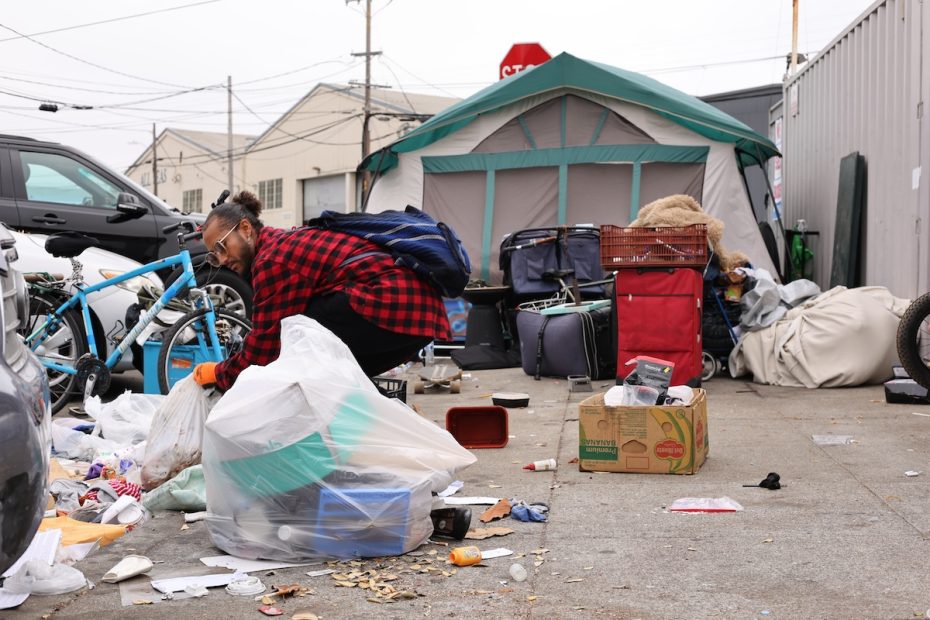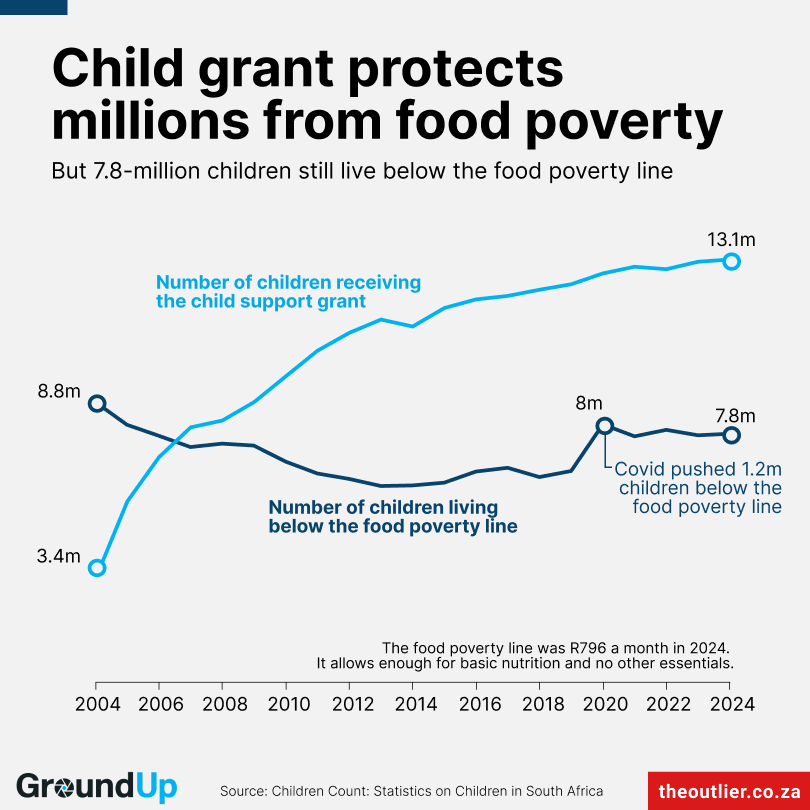Low-Income Families Face Homelessness Under Proposed HUD Changes – NewsOne

Analysis of Proposed HUD Policy on Subsidized Housing and its Implications for Sustainable Development Goals
Introduction to the Proposed Policy Change
A discretionary budget proposal for the 2026 fiscal year includes a significant policy shift for the Department of Housing and Urban Development (HUD). The central change involves the introduction of a two-year time limit for residents in government-subsidized housing. The administration’s stated objectives for this policy are:
- To encourage self-sufficiency among low-income families.
- To mitigate perceived fraud and waste within the current system.
- To reframe HUD assistance as a temporary support mechanism rather than a permanent solution.
Projected Impacts on Housing Stability and Poverty (SDG 1 & SDG 11)
A study conducted by New York University (NYU) projects severe consequences if the proposed time limits are enacted. The findings indicate a direct conflict with key United Nations Sustainable Development Goals (SDGs), particularly those concerning poverty and housing.
- Threat to Housing Security: The study estimates that 1.4 million low-income families could face eviction, directly undermining SDG 11 (Sustainable Cities and Communities), which calls for ensuring access for all to adequate, safe, and affordable housing.
- Increased Risk of Poverty and Homelessness: The potential displacement could push a significant number of individuals and families into homelessness, including an estimated one million children. This outcome would represent a major setback for SDG 1 (No Poverty), which aims to eradicate poverty in all its forms.
- Disruption to Communities: The NYU report warns of “enormous disruption,” as public housing authorities would be forced to manage mass evictions and the administrative burden of identifying and processing new households to replace them.
Economic and Socioeconomic Analysis (SDG 8 & SDG 10)
The rationale for the policy is contested by data regarding the economic status of subsidized housing residents and the broader economic climate. The proposal’s impact on economic inequality and decent work is a primary concern.
- Working Poor and Wage Stagnation: A significant portion of residents in subsidized housing are employed but earn wages that are insufficient to keep pace with the rising cost of living. The policy does not address the underlying issue of low wages, which is a critical component of SDG 8 (Decent Work and Economic Growth).
- Exacerbating Inequality: By targeting non-elderly and non-disabled adults, the policy could disproportionately affect working families and deepen existing social and economic divides, contrary to the aims of SDG 10 (Reduced Inequalities). The NYU analysis of HUD data over a decade found that of the 2.1 million households potentially affected, approximately 70% had already resided in subsidized housing for two or more years, indicating a long-term need not addressed by the proposed limit.
- Administrative Inefficiency: The NYU study found no evidence that imposing time limits would result in cost savings. Instead, it predicts large administrative costs associated with tenant turnover, challenging the administration’s claim of curbing waste.
Conclusion and Alternative Strategies Aligned with SDGs
The proposed two-year time limit on subsidized housing is projected to undermine progress toward multiple Sustainable Development Goals by increasing housing instability and poverty without addressing the structural economic challenges faced by low-income families. Critics argue the policy functions as a punitive measure rather than a tool for promoting genuine self-sufficiency.
Alternative approaches that align more closely with the SDGs would focus on empowering residents and removing barriers to economic mobility. Such strategies could include:
- Investing in Human Capital: Improving and expanding skills training and job corps programs to enhance employment opportunities and earning potential, directly supporting SDG 4 (Quality Education) and SDG 8.
- Expanding Financial Support Systems: Strengthening, rather than dismantling, programs such as student loan assistance that enable individuals to achieve higher education and secure better-paying jobs.
- Adopting Holistic Policies: Developing comprehensive strategies that address the root causes of housing insecurity, including the national cost-of-living crisis, inflation, and wage stagnation, thereby creating a more sustainable path to self-sufficiency.
Analysis of Sustainable Development Goals in the Article
1. Which SDGs are addressed or connected to the issues highlighted in the article?
- SDG 1: No Poverty
- SDG 4: Quality Education
- SDG 8: Decent Work and Economic Growth
- SDG 10: Reduced Inequalities
- SDG 11: Sustainable Cities and Communities
2. What specific targets under those SDGs can be identified based on the article’s content?
-
SDG 1: No Poverty
- Target 1.2: “By 2030, reduce at least by half the proportion of men, women and children of all ages living in poverty in all its dimensions according to national definitions.” The article directly addresses this by highlighting that the proposed HUD policy could make “an estimated one million children… homeless,” which would significantly increase child poverty rather than reduce it.
- Target 1.3: “Implement nationally appropriate social protection systems and measures for all, including floors, and by 2030 achieve substantial coverage of the poor and the vulnerable.” The article discusses government-subsidized housing as a key social protection system. The proposal to introduce a two-year time limit is a direct threat to this system, which currently assists “our most vulnerable citizens.”
-
SDG 4: Quality Education
- Target 4.3: “By 2030, ensure equal access for all women and men to affordable and quality technical, vocational and tertiary education, including university.” The article criticizes the administration for trying to “gut” student loan assistance programs, which are essential for ensuring affordable access to tertiary education.
- Target 4.4: “By 2030, substantially increase the number of youth and adults who have relevant skills, including technical and vocational skills, for employment, decent jobs and entrepreneurship.” The article suggests that a better path to self-sufficiency would be to “improve current skills training programs” and criticizes the administration’s attempt to “kill” Job Corps centers, which provide such vocational training.
-
SDG 8: Decent Work and Economic Growth
- Target 8.5: “By 2030, achieve full and productive employment and decent work for all women and men… and equal pay for work of equal value.” The article notes that “many of these people living in subsidized housing are working. They’re simply not making enough to keep up with the average cost of living in their area.” This points to a failure to provide decent work that pays a living wage.
-
SDG 10: Reduced Inequalities
- Target 10.2: “By 2030, empower and promote the social, economic and political inclusion of all, irrespective of… economic or other status.” The proposed HUD policy is described as an “attempt by the Trump administration to punish the poor,” which represents a move towards economic exclusion of vulnerable groups rather than inclusion.
- Target 10.3: “Ensure equal opportunity and reduce inequalities of outcome, including by eliminating discriminatory laws, policies and practices…” The article frames the HUD proposal as a policy that would disproportionately harm low-income families, thereby increasing inequality of outcome. The linked articles also mention a history of “racist housing policy” and undermining housing discrimination cases, which directly relates to this target.
-
SDG 11: Sustainable Cities and Communities
- Target 11.1: “By 2030, ensure access for all to adequate, safe and affordable housing and basic services…” This is the central theme of the article. The projection that “1.4 million low-income families could lose their homes” due to the proposed time limit on government-subsidized housing is a direct contradiction of this target’s goal.
3. Are there any indicators mentioned or implied in the article that can be used to measure progress towards the identified targets?
-
Indicator for SDG 11, Target 11.1
- Proportion of population living in inadequate housing or at risk of homelessness: The article provides specific numbers that can serve as indicators. It states that “1.4 million low-income families could lose their homes” and that of the “4.9 million households” in public housing, “about 2.1 million could be affected by the time limits.” These figures directly measure the potential negative impact on access to adequate housing.
-
Indicator for SDG 1, Target 1.2
- Number of children living in poverty or at risk of homelessness: The article provides a direct indicator by stating that “an estimated one million children could become homeless should the policy go into effect.” This figure can be used to measure the impact of housing policies on child poverty.
-
Indicator for SDG 8, Target 8.5
- Proportion of the working population unable to afford basic living costs: The article implies this indicator by stating that many residents in subsidized housing are working but “not making enough to keep up with the average cost of living.” It also mentions that “inflation spiking 2.7 percent last month” makes it harder for the working population to afford necessities, serving as a related economic indicator.
-
Indicator for SDG 4, Target 4.4
- Availability and funding of vocational training programs: The article does not provide numbers but implies a negative indicator through its mention of the administration’s attempt to “kill” Job Corps centers. The closure or defunding of such programs would be a clear indicator of moving away from the target of increasing the number of adults with relevant job skills.
4. Summary Table of SDGs, Targets, and Indicators
| SDGs | Targets | Indicators Identified in the Article |
|---|---|---|
| SDG 1: No Poverty | 1.2: Reduce poverty in all its dimensions. 1.3: Implement social protection systems. |
The projection that “an estimated one million children could become homeless.” The threat to government-subsidized housing as a social protection system. |
| SDG 4: Quality Education | 4.3: Ensure equal access to affordable technical, vocational and tertiary education. 4.4: Increase the number of youth and adults with relevant skills for employment. |
The administration’s attempt to “gut” student loan assistance programs. The administration’s attempt to “kill” Job Corps centers. |
| SDG 8: Decent Work and Economic Growth | 8.5: Achieve full and productive employment and decent work for all. | The fact that many in subsidized housing are working but not earning enough to cover the cost of living. The mention of “inflation spiking 2.7 percent.” |
| SDG 10: Reduced Inequalities | 10.2: Empower and promote the social, economic, and political inclusion of all. 10.3: Ensure equal opportunity and reduce inequalities of outcome. |
The description of the policy as an attempt to “punish the poor.” The policy disproportionately affects “low-income families” and “our most vulnerable groups.” |
| SDG 11: Sustainable Cities and Communities | 11.1: Ensure access for all to adequate, safe and affordable housing. | The projection that “1.4 million low-income families could lose their homes.” The number of households affected: “2.1 million could be affected by the time limits.” |
Source: newsone.com

What is Your Reaction?
 Like
0
Like
0
 Dislike
0
Dislike
0
 Love
0
Love
0
 Funny
0
Funny
0
 Angry
0
Angry
0
 Sad
0
Sad
0
 Wow
0
Wow
0












































































